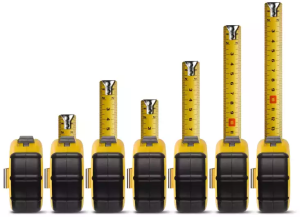It isn’t the business owner’s fault that their SEO sucks – the blame falls squarely on the SEO or website design/development firm they hired.
 For those who take the DIY SEO approach to their business, focus on nailing the basic stuff before applying more advanced SEO tactics; or before starting an AdWords campaign. Having a website without SEO is like moving into a half-built house – the framework is there, you just have to fill in the blanks.
For those who take the DIY SEO approach to their business, focus on nailing the basic stuff before applying more advanced SEO tactics; or before starting an AdWords campaign. Having a website without SEO is like moving into a half-built house – the framework is there, you just have to fill in the blanks.
Businesses who outsource their SEO need to make certain the company they hire is also fully qualified to tackle the ongoing SEO by educating themselves with the nuances of search engine optimization. You can’t ask the right questions if you don’t know the right words. And don’t be shy about asking prospect providers to explain their strategy for your business – by all means, do it! Listen for a “unique” strategy built for your unique business and pass on menu pricing and automated solutions. As you go through the process, just remember what Einstein said:
“If (they) can’t explain it simply, (they) don’t know it well enough” ~ Einstein
Any SEO or web designer/developer worth considering should be able to explain in non-technical terms; your current website status, their plans to correct any flaws as well a growth strategy.
Now that I’ve laid the foundation for my story, I’m going to pass on writing a best SEO tips article, and head in the opposite direction by pointing the most recurrent things we see on websites that are killing search engine ranking along with tips on how to fix them.
So read along and compare the things noted against your website and make it a priority to get them fixed soon – your online visibility will be all the better for it.
1. Lack Of Keyword Focus
The days of brainstorming to capture every conceivable word (called keywords) or phrase (yep, this one would be the key-phrase) that your business could rank for then stuff those onto your website are long over (they did exist though). So too are the days of making individual pages for each iteration of keywords.
Keyword research is tough, but it’s got to get done. Use Google’s Keyword Planner as a starting point. Be sure to select your targeting area so your results are geographically relevant (i.e. local). While you’re at it, selecting “Google and search partners” along with “Only show closely related ideas” under the “Customize your search” header may yield even better results.
You still should build pages based on keywords, but use them as a larger theme instead of a tight silo.
Write to be read – but in a way that search engines favor
2. The Wrong Keyword Focus
 There are the keywords that people type (or speak) into their device to find answers, and there are the words that you want to be discovered by. You very well might hit it out of the park with being discovered for both – but at the beginning – focus first on the words people are using to discover you (and maybe your competition) by. Very often businesses have a long list of terms they want to be discovered for, and very often, these don’t match the words people are actually using to find businesses like theirs. The solution? See tip one.
There are the keywords that people type (or speak) into their device to find answers, and there are the words that you want to be discovered by. You very well might hit it out of the park with being discovered for both – but at the beginning – focus first on the words people are using to discover you (and maybe your competition) by. Very often businesses have a long list of terms they want to be discovered for, and very often, these don’t match the words people are actually using to find businesses like theirs. The solution? See tip one.
In addition to using Google Keyword Planner, AdWords keyword conversion data as well as “search terms” data offer great insight. As does Google & Bing webmaster tools. Having these should be the defacto standard for all websites.
3. Poor META
Here’s what you need to know – every client-facing page of your website needs a unique META Title, also goes by the name Page Title. This is a primary and most foundational SEO element that identifies the title of every page of your website. Think of it as the chapters of a book, no two could be the same.
Here’s the fix: keep your META Title between 30-60 characters (top limit is 65 characters, and it’s actually measured in pixels, 200-512px if you will). Place your keyword as close to the beginning of the narrative that you can and end with your brand. Keep punctuation to a minimum, and use dashes and pipes (this > | < is a pipe) as separators if you need to and remember to write to be read – but in a way that search engines like. Nothing on your website should read robotic. Oh yea – it’s the opposite for the homepage (brand focus first – keyword focus last). Seriously – that’s how you do it.
As for META Descriptions (Page Descriptions) – not a ranking factor. But lead with your keyword and write to entice someone to click your link. This is your #1 conversion element, but few people actually read all 165 characters of it (that’s the limit – 932px if you will) so write it to be skim-read.
Lastly, META Keywords – oh stop the insanity! Stop using those, they have not been useful for a long time, give it up. For real, all the search engines have depreciated them and you’re likely to get yourself into more trouble than they’re worth. See step one instead.
4. Inconsistent Local Attributes
This one’s for businesses marketing locally and impacts more than 85% of the websites we see.
Be certain that your business Name, Address, and Phone Number (referred to as NAP) are on your website as text – not words within an image. Search engines can only see written text – they can’t see images – so make sure your contact information (and primary keywords) aren’t layered in an image.
Best practice would to have your contact information on every page of your website, and because it’s a global element, the footer is a prime location to make that happen. While you’re at it, consider adding your contact information as structured markup code (schema), it offers descriptive behind the scenes that search engines eat up.
 5. Robot Tags
5. Robot Tags
In the old days we instructed search engines to “index” a webpage with a line of code called a robot META tag, but that practice isn’t necessary any longer. Here’s how Google say it “The default values are “index, follow… and do not need to be specified.” Adding an index META tag to a site today could be perceived as being a bit pushy (forced directive) – so it’s best to not include it. Don’t worry though, the default has you covered as all pages are indexable unless noted otherwise (like below).
Surprisingly, just like the index META code we see a lot of pre-production/in-development websites the aren’t using the “noindex” tag when using a separate URL during the website development stages (e.g. yoursite2.com). In the absence of this code, the in-development pages will show up online instead-of or in-addition to your clients existing pages– and that’s not going to be a fun conversation.
We’ve also seen website developers using a subdomain on their own website to host a pre-production website. It looks something like this client.yourwebsite.com. Can you imagine the mess this makes when they forget to use the correct META tag?
6. Poor Image Elements
The number one thing that prevents pictures from being discovered within image searches has nothing to do with the image. It’s a poorly structured filename that will kill any chance of an image being discoverable online.
The filename is the strongest SEO element for images – as well as for podcasts, and videos
This is a super easy fix, but could take a ton of time to change. If your website is on WordPress, there are some decent file renaming tools that do a good job with the heavy lifting, but be careful of using a fully automatic one, those are usually a compromise solution that could triple your headache.
Here’s the advice we give our clients: format the filenames in lowercase using dashes-to-separate words (not spaces or_underscores) and make sure to include the keyword of the page the image is to be placed on within the filename (e.g. a “red shoe” images that belongs on the “red shoe” page of your website should contain the keywords “red shoe” or “red shoes”). This is an overly simplified explanation, but it’s not rocket science, and most business owners can do this. If you have tons of files, set up a schedule to do a few every day, you’ll get through it.
6 1/2. Not Using Analytic & Webmaster Tools
Not a ranking factor – but as the saying goes “you can’t manage what you don’t measure”. I don’t have hard data on this, but I would have to say that 1/3 of the websites we see do not have Google Analytics installed – and even fewer have Google & Bing Webmaster Tool access(Google’s is now called Google Search Console).
Before making any change to a website, make certain you can measure the effectiveness of those changes. These tools are FREE and the self-help and how-to articles on to use them are excellent.
effectiveness of those changes. These tools are FREE and the self-help and how-to articles on to use them are excellent.
So there you have it – six 1/2 ways to bolster up foundational elements of your website that often go missing and kill online visibility. Fix these and watch you rankings trend up!
41.840905 -71.349179


COMMENTS ( 1 )
posted on 12 October at 10:47
I've seen G's SERP page bolding some keywords in meta descriptions. Does it really fail to affect rankings?